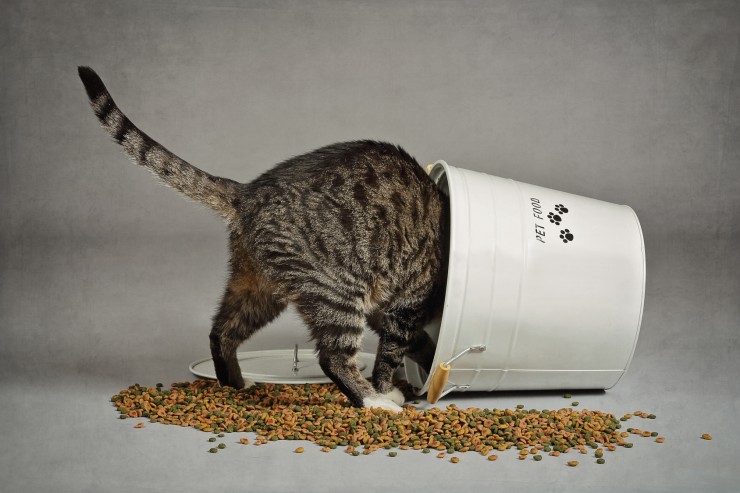
Follow these 10 pieces of advice and you should be able to set up your tropical freshwater aquarium without any major set backs.
1. The Tank?
Whether you have an acrylic or glass tank it must be sterilized before you can start putting anything in it. And you must have a hood/cover/canopy to reduce water loss by evaporation, stop the fish from jumping out and it holds your lighting system
2. What About Heating The Water?
You need to maintain the water temperature by means of a heater and thermostat combination. For tanks greater than 3 feet in length you may need a couple of these to ensure an even temperature throughout. Thermostats can be either internal or external to the tank and must be adjustable by the aquarist. A thermometer will be needed to check the temperature
3. How Much Lighting?
You will need sufficient lighting to encourage plant growth but not too much giving you an algae problem. Use fluorescent tubes or tungsten lighting or a combination of the two. Experiment to achieve the desired result. Lighting the aquarium for ten to twelve hours per day is common
4. What About Filtration and Aeration?
A filtration unit (internal or external) to the tank will remove suspended material from the water. An air pump attached to an air stone can aerate the water and boost the oxygen supply along with the small amount from the plants; although many do not see mechanical aeration as compulsory if the aquarium is properly set up.
5. What Do I Put In The Tank?
The bottom of the tank is covered with washed gravel substrate arranged so the level rises up towards the back and deep enough for aquatic plants to be rooted. Rocks can be placed to disguise corners.Tall plants behind bushier species will give the impression of depth. The front and foreground of the tank will be fairly open for the fishes to swim around in.
6. How do I Fill The Tank?
Install the heating and filtration system. Pour water into a cup on the bottom of the tank and continue till it the tank is two thirds full. Insert your plants, top up, switch on heating, lighting and filtration systems. Now run your aquarium for at least two weeks to establish your plants and the biological system before adding your fishes
7. How Do I Stock The Aquarium?
Before you add your fishes calculate how many fish you can accommodate based on the surface area of the tank. A rough guide for tropical aquarium fish is to allow 12 square inches per one inch of fish. For example, if your tank's surface area is 408 square inches then you could have 36 one inch fish or 18 two inch fish etc.
And also take into account the fishes particular swimming and behavioral characteristics.Introduce the fish into the tank by keeping them in their plastic bag till the water temperature equalizes that of the aquarium. You could add some of the aquarium water to the bag. Then release the fish into its new environment.
8. Is The Diet And Feed Correct?
Generally speaking fishes do not have specific dietary requirements though its is always best practice to do a bit of research and determine if a particular species your have has any. Dried foods area available in a wide range of forms; flakes,pellets, tablets and powder. Live foods can also be introduced to give a varied diet.
Included in this category are insect larvae, micro-worms, freshwater crustaceans, and brine shrimp young.If vegetarian diets are needed use lettuce, oat flakes and chopped up spinach. It is important to make sure that the fishes only eat what you feed them in a few minutes. Otherwise the excess food will rot and pollute the water.
9. What Maintenance Do I Need To Do?
Daily: Check on temperature and how the fish look. Weekly: Measure water quality (nitrite, nitrate, ammonia, pH), prune aquatic plants, remove debris from floor, clean and/or filter media. Monthly or longer: Partial water changes of 10-20% of the tank volume with the water at the same temperature and make up if possible. Algae on the tank front can be scraped off. The sides can be left for the fish
10. What about Illnesses?
Isolating fish is a great way to reduce the chance of illness occurring. Before you add new fish to your community, quarantine them or him/her in an isolation tank for a couple of weeks so you can see if they were bought with an illness established. Make the tank comfortable with plants and substrate just like the main tank and maintain the same conditions.
There are some illnesses you need to know about. Mouth fungus - cured by antibiotics. White spot - tiny white spots on the fish. Raised water temperature, salt treatment and medications are potential solutions. Fin rot - this infection happens after physical damage and is cured by antibiotics in clean water. Fungus - appears like cotton wool on the skin. Cured by salt baths or methylene blue or malachite green treatments. Use your isolation tank for treating your ill fish from the main tank.
So there you have it, 10 issues you have conquered in setting up your tropical freshwater aquarium.
Paul Curran is webmaster at Fresh-Water-Aquariums-Guide.com and provides a care information system for fresh water aquariums. Get your FREE E-Course on how to set up and maintain a beautiful aquarium, have the healthiest, happiest fish around AND learn more about your tropical freshwater aquarium
 Top 3 tips for Beginner Feral Pig Hunters
Top 3 tips for Beginner Feral Pig Hunters
 Read This Article If You Are Very Much Against Cruelty To Animals
Read This Article If You Are Very Much Against Cruelty To Animals
 6 Medical Reasons Why Your Dog May Be Overweight
6 Medical Reasons Why Your Dog May Be Overweight
 How To Feed Your Dog A Diet That Produces A Low Waste Output
How To Feed Your Dog A Diet That Produces A Low Waste Output
 Making Meal Times More Exciting For Your Cat
Making Meal Times More Exciting For Your Cat
 Finding The Right Horse Riding Instructor
Finding The Right Horse Riding Instructor
Copyright © 2005-2016 Pet Information All Rights Reserved
Contact us: www162date@outlook.com